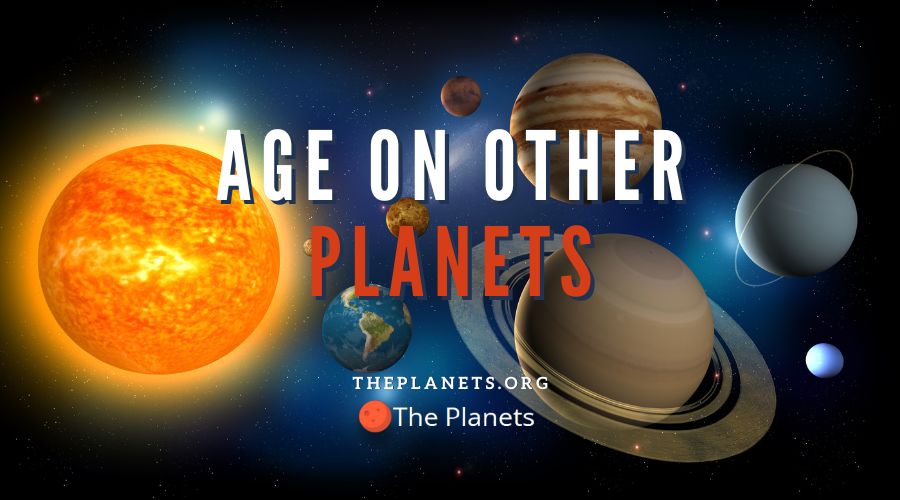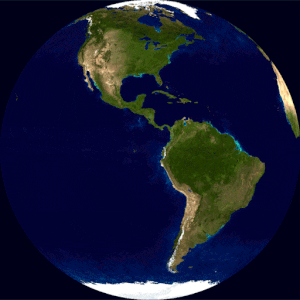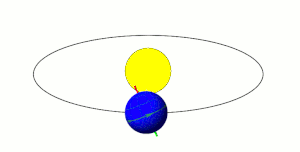
Why is your age different on other planets/worlds?
As you can see from the very different numbers in the boxes above, your age changes (sometimes quite a lot) depending on the planet. So how do we define one day and one year on a planet?
Earth, and all other planets, are constantly in motion. There are many different types of motion that are happening all at the same time. For determining a day on a planet and a year on a planet, there are two main types of motion.
Axis rotation to determine the length of a day

The first type of movement is the axial, or axis, rotation. This is the spinning movement of the actual planet and is similar to a spinning top.
The length of time it takes a planet to complete one full rotation on it’s axis is what we would measure as being one day.
On Earth, it takes slightly less than 24 hours to rotate on its axis and this is one day. We round it up to a full 24 hours. And that can be broken down into 24 hours of 60 minutes in length which can also be divided into 60 seconds in every minute.
The axis rotation speed across the planets varies and this is why the ages in the boxes above are different. The speed at which a planet rotates on its axis is determined by a number of complex factors, including how fast the original matter was “spinning” when the planets were formed 4.5 billion years ago.
Jupiter, for example, has a the fastest rotation speed of all the planets and takes just 9.92496 Earth hours to complete a full rotation on its axis. By comparison, Venus takes 243.018 days to complete one rotation.
Orbit or revolution around the Sun to determine the length of one year

The second movement is the revolution of the planet as it moves around the Sun. This is often referred to as the planet’s orbit or orbit path. On Earth, you probably know that one year takes 365.26 Earth days. This is how long it takes for the Earth to revolve once around the Sun.
Pluto, the dwarf planet, has a very large orbit path and it takes almost 248 years to complete one full revolution around the Sun. This is why your age in the Pluto box above is so young.
Mercury is the closest planet to the Sun and so has a smaller orbit path – it takes just 88 Earth days for the planet to orbit once around the Sun.
Rotation and orbit periods for the planets
| Planet | Rotation period | Orbit period |
|---|---|---|
| Mercury | 58.646 days | 87.97 days |
| Venus | 243.018 days | 224.70 days |
| Earth | 0.99726968 days | 365.26 days |
| Mars | 1.026 days | 1.8808476 years |
| Jupiter | 0.41354 days | 11.862615 years |
| Saturn | 0.444 days | 29.447498 years |
| Uranus | 0.718 days | 84.016846 years |
| Neptune | 0.671 days | 164.79132 years |
| Pluto (dwarf planet) | 6.387 days | 247.92065 years |